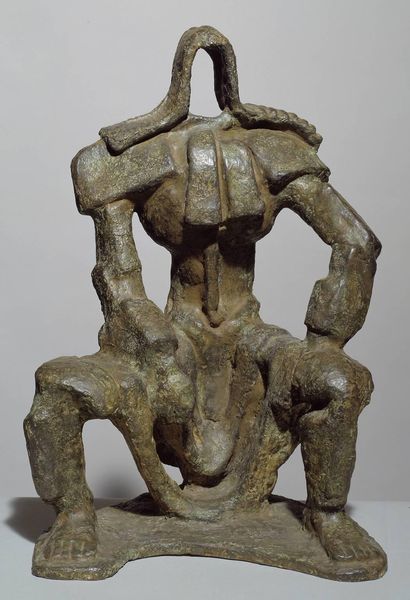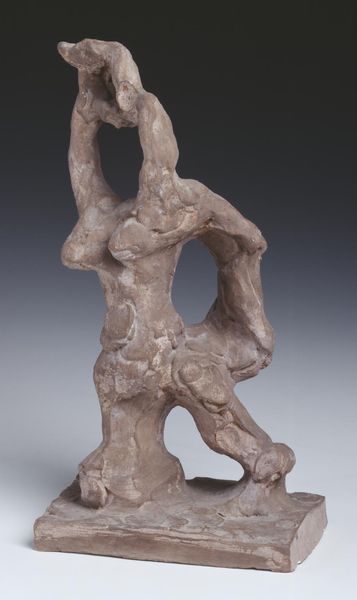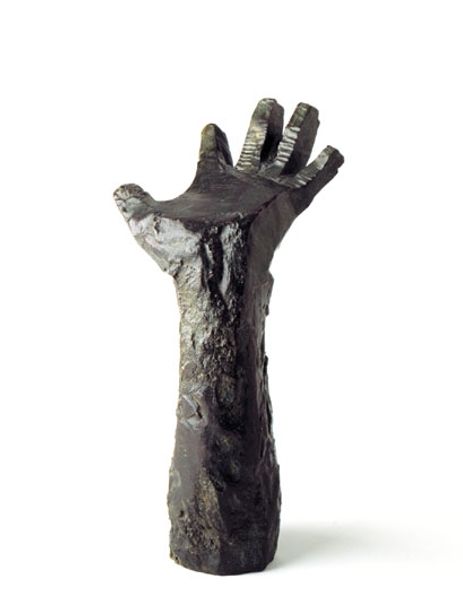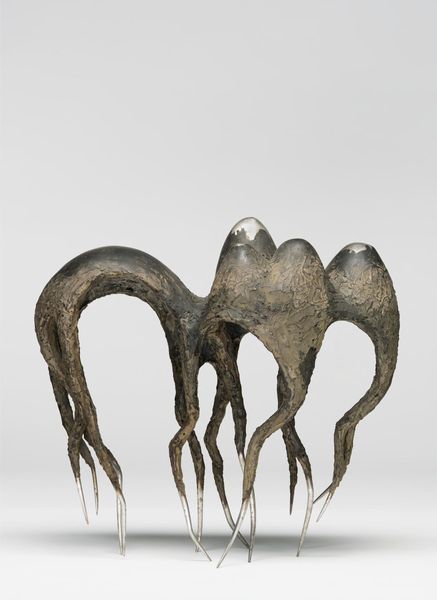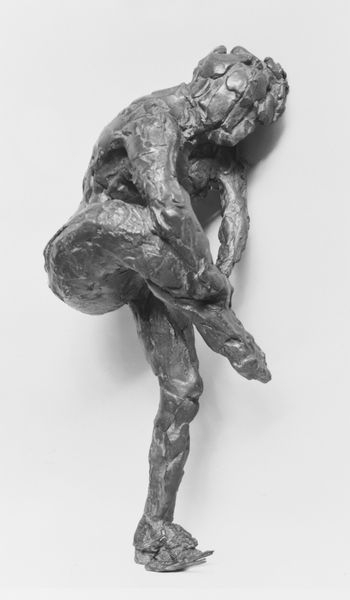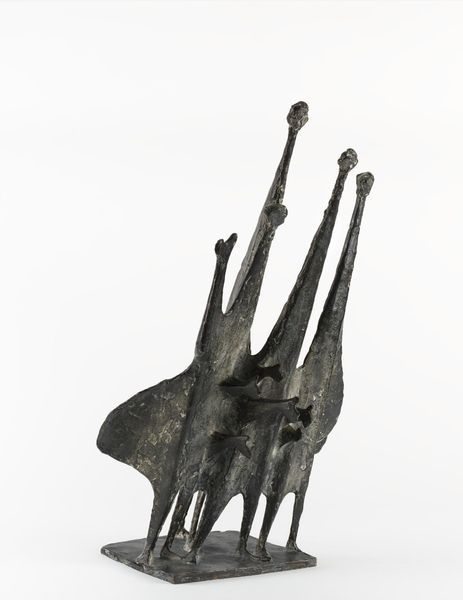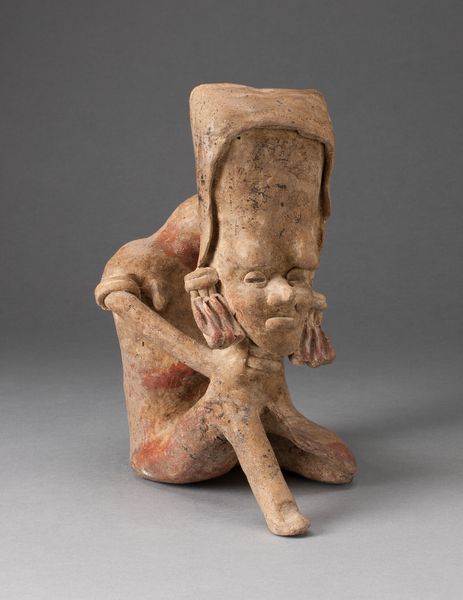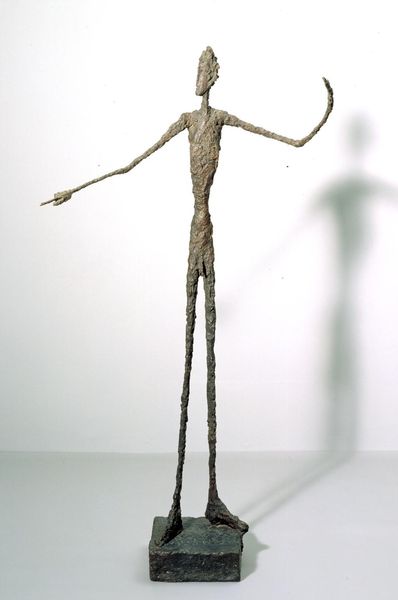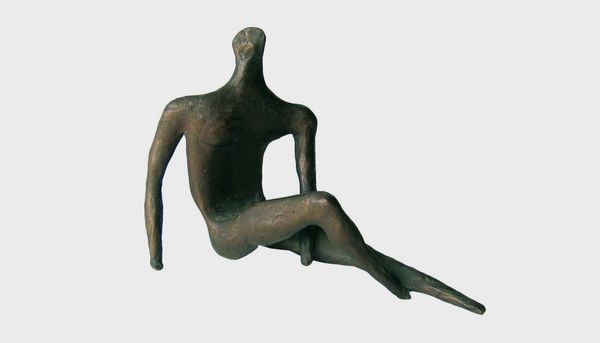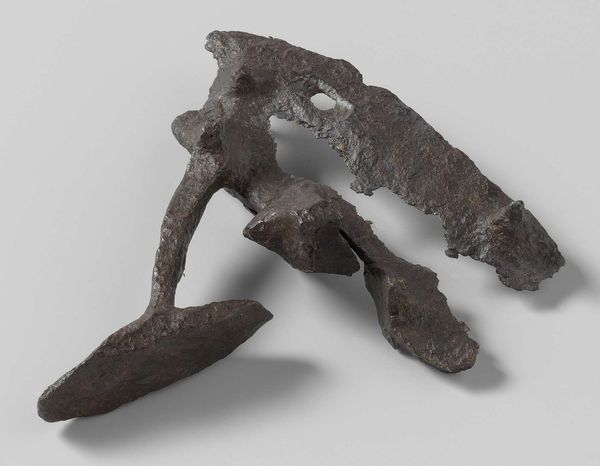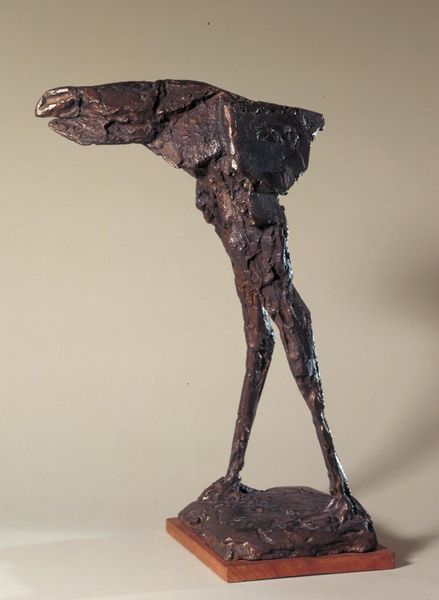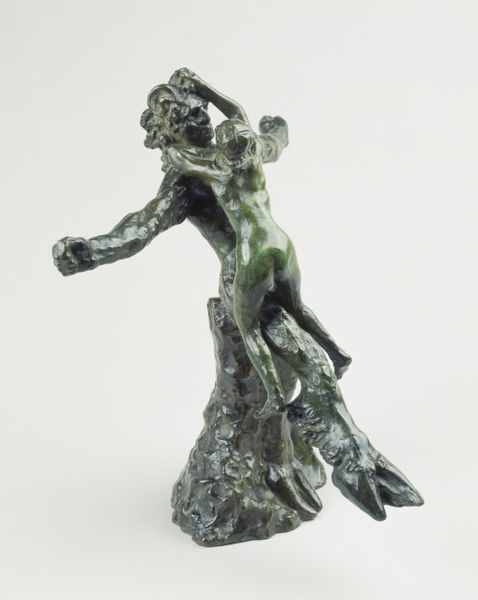
Copyright: Alexander Calder,Fair Use
Curator: Let's explore Alexander Calder’s "The Acrobats," created in 1944 using mixed media. What strikes you about it initially? Editor: Well, the rough texture gives it a kind of raw, almost primal feel. It's figural, but definitely not classical sculpture, there's a very expressive awkwardness to the figures, and it makes me wonder about the dynamic between the figures themselves. How do you interpret this work in the context of the time it was made? Curator: Absolutely. Context is crucial. Made during World War II, this sculpture exists within a period of intense social and political upheaval. Look closely – do you notice how the figure seems burdened, almost crushed, by the weight on its shoulders? Is it just a circus scene, or something more? Editor: Now that you mention it, that awkwardness does read as a heavy burden, a struggle. Curator: Calder's abstract works often explore the tension between opposing forces and the intersectional representation of weight. Could this precarious balance perhaps symbolize the oppressive weight of societal expectations, the very real burdens placed upon marginalized communities and individuals, or the political instability that pervaded wartime society? And think about the figures – their vulnerability, their seemingly incomplete state…what does that say to you? Editor: So you're saying that the Acrobat isn't just performing but also representing how specific members of the populace were feeling. I hadn't considered it in such depth before. The fragility of form reinforces that interpretation for me. Curator: Precisely! Art provides the lens through which we understand societal issues from unique perspectives. Hopefully, we both learned about new ways of seeing it, and using those perceptions to analyze art in different eras.
Comments
No comments
Be the first to comment and join the conversation on the ultimate creative platform.
